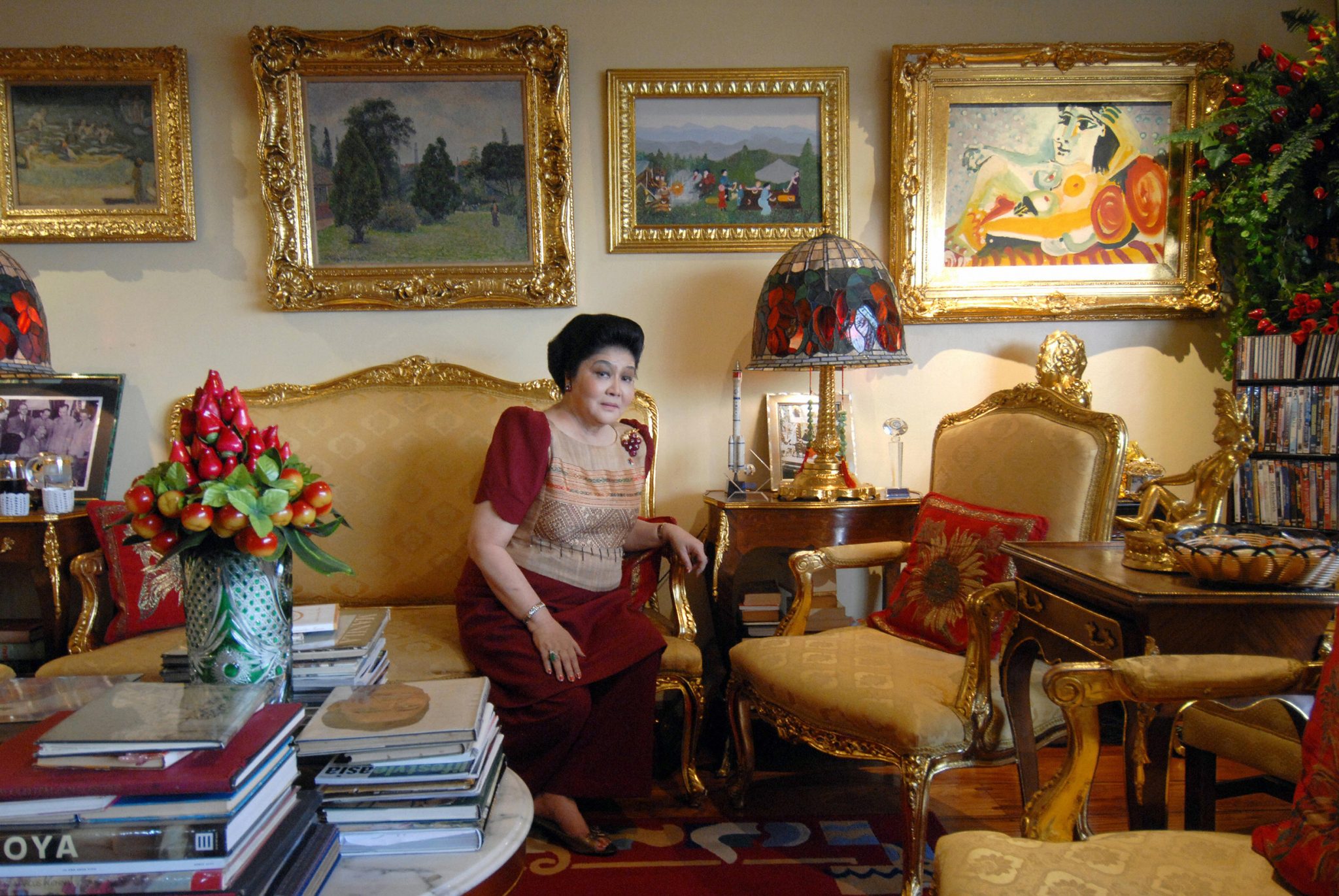I was never troubled by whether the painting was ‘real’ or ‘fake’
This month’s Philippine presidential elections saw the offspring of autocrat Rodrigo Duterte (the outgoing president) and kleptocrat conjugal dictators Ferdinand and Imelda Marcos (who presided over a brutal regime from the 1960s to the 1980s) take the country’s most powerful political seats. Shortly after the landslide victory, in which Ferdinand ‘Bongbong’ Marcos Jr. was elected president (and Sara Duterte set to be vice-president) international headlines of a ‘lost’ Picasso painting – spotted in Imelda Marcos’s home as she congratulated her son – eclipsed more serious commentary about the real-life consequences of the forthcoming era.
The painting Nu assis appuyé sur des coussins VI (Seated nude leaning on cushions) from 20-21 December 1964 – mistakenly identified in some reports as Femme Couchée VI of 1932 – was thought to have been seized in 2014 by the Presidential Committee on Good Government, a task force created following the Marcoses’s fall from power in 1986. However, former PCGG chair Andres Bautista recently told Rappler ‘I know that what we seized was a fake’.
As someone deeply familiar with the family’s penchant for deception and thievery, I was never troubled by whether the painting was ‘real’ or ‘fake’. Instead, let me pose this question: who cares?
The Picasso is a cipher for the Marcos era’s crony capitalism – set against a ravaged economy still wallowing in the poverty caused by their tyranny. The surge of interest in the mysterious painting is reminiscent of similar reports from the 1980s of Imelda Marcos’s collection of 3,000 shoes, that so titillated readers from around the world following her family’s exodus. Her shoes’ fame eventually surpassed the details of the Marcoses’s abusive rule for those less familiar with Philippine politics, becoming the family’s primary attribute within the popular imagination.
Marcos Jr.’s win indicates the success of his family’s revisionist campaign to transform the history of the Martial Law years into an era of prosperity. Apparently long forgotten are the thousands tortured, imprisoned and murdered, and the billions of dollars embezzled by the family. So too are the many casualties of Rodrigo Duterte’s own rule.
Paintings and shoes threaten to shroud the wretched realities of the Marcos era. International fascination likely stems from ‘Picasso’ as an easy signifier of luxury art, with several outlets proclaiming the painting to be likely worth $150 million. (A similar work of the same title and year fetched $2.5 million at Christie’s in 2019, indicating a more realistic value). Nu assis is a relatively unimportant painting from a relatively unimportant era in Picasso’s oeuvre, one of the c.50,000 artworks he produced in total. Those working in the art market know, if you can afford it, buying any artist’s best work is generally better than buying a blue-chip artist’s mediocre efforts; and that’s what many of the impressionist/modern paintings of Imelda Marcos’s collection of around 251 paintings were – average examples from overexposed artists. (I don’t know enough about Old Masters to comment on that portion of her collection, but it did also include a fake Michelangelo).
Indeed – in a detail from a 1986 New York Times report – an unnamed dealer once described selling to Imelda Marcos as ‘a nice way to get rid of paintings you didn’t want’.
Needless to say, uncovering images or information about Imelda Marcos’s art collection has proven difficult. Ricardo Manapat’s 2020 book Some Are Smarter Than Others quotes dealer Richard Pichler on the inventory of her missing artworks: ‘whoever prepared this list did not know what he was talking about or deliberately tried to mislead investigators. The way that this list is constructed makes it impossible to recover any of the artworks. Many of the paintings listed here form parts of a series, or there are several versions of the same portrait.’ Even the Picasso in question is misidentified, designated Reclining Woman IV on themissingart.ph – the PCGG’s official website tracking the artworks.
This deliberate obfuscation of facts alarmingly extends to even the government’s official discussions of the Marcos dictatorship. The official presidential website was temporarily unavailable immediately following the elections. Now back online, any discussion of the dictatorship has been wiped from the record.
This is the terrifying promise of the next 6 years: a future of erasure and revision. Marcos Jr. has now designated vice president-elect Sara Duterte as education secretary, effectively cementing the forthcoming erosion of fact within the textbooks of the Philippines’ new corrupted history. The Rappler journalist Chay Hofileña recently told The New Yorker, ‘If, in a Duterte Presidency, the main issue was human rights, in a Marcos Presidency it would be truth. I don’t know what’s worse, someone who doesn’t value life or someone who doesn’t value truth.’ However, this Marcos-Duterte alliance assures that the issue in this new era is both.
